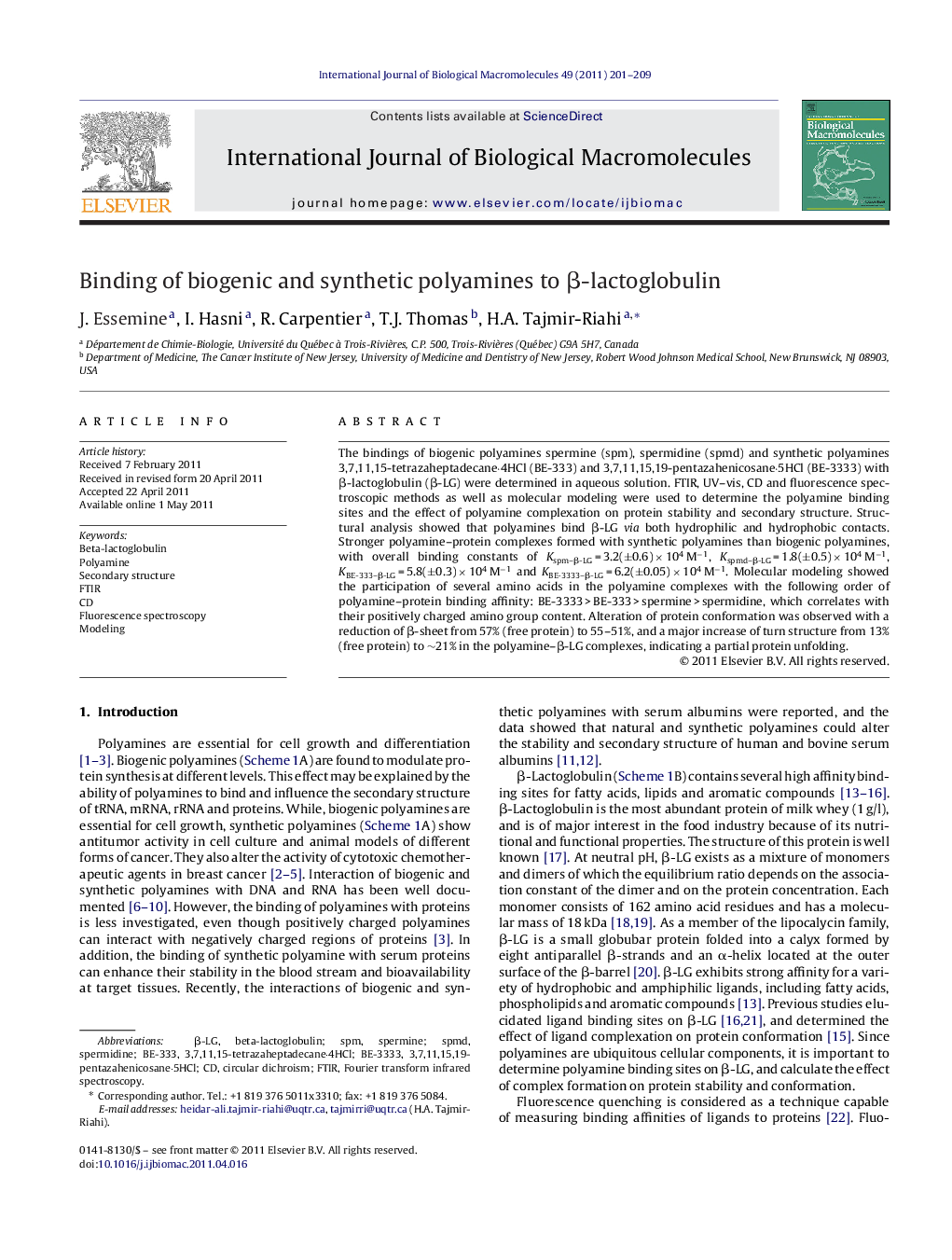| Article ID | Journal | Published Year | Pages | File Type |
|---|---|---|---|---|
| 1987267 | International Journal of Biological Macromolecules | 2011 | 9 Pages |
The bindings of biogenic polyamines spermine (spm), spermidine (spmd) and synthetic polyamines 3,7,11,15-tetrazaheptadecane·4HCl (BE-333) and 3,7,11,15,19-pentazahenicosane·5HCl (BE-3333) with β-lactoglobulin (β-LG) were determined in aqueous solution. FTIR, UV–vis, CD and fluorescence spectroscopic methods as well as molecular modeling were used to determine the polyamine binding sites and the effect of polyamine complexation on protein stability and secondary structure. Structural analysis showed that polyamines bind β-LG via both hydrophilic and hydrophobic contacts. Stronger polyamine–protein complexes formed with synthetic polyamines than biogenic polyamines, with overall binding constants of Kspm–β-LG = 3.2(±0.6) × 104 M−1, Kspmd–β-LG = 1.8(±0.5) × 104 M−1, KBE-333–β-LG = 5.8(±0.3) × 104 M−1 and KBE-3333–β-LG = 6.2(±0.05) × 104 M−1. Molecular modeling showed the participation of several amino acids in the polyamine complexes with the following order of polyamine–protein binding affinity: BE-3333 > BE-333 > spermine > spermidine, which correlates with their positively charged amino group content. Alteration of protein conformation was observed with a reduction of β-sheet from 57% (free protein) to 55–51%, and a major increase of turn structure from 13% (free protein) to ∼21% in the polyamine–β-LG complexes, indicating a partial protein unfolding.
Graphical abstractFigure optionsDownload full-size imageDownload as PowerPoint slide
